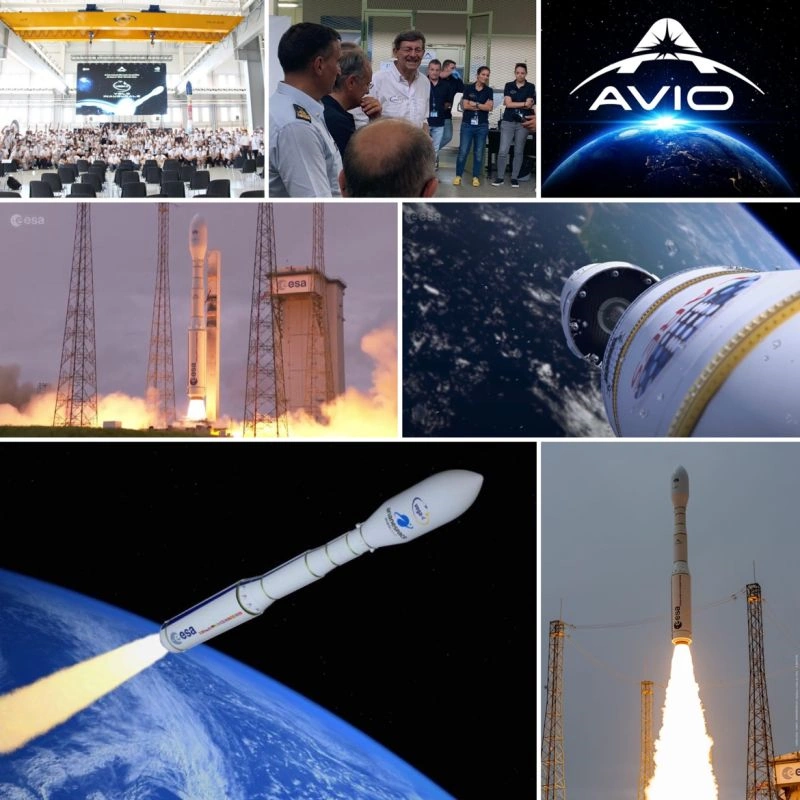
We never dwell enough on how much Made in Italy know-how there is in space. Instead, Italy is part of a small group of seven nations in the world capable of sending an object into orbit. This prestigious achievement testifies to Italy’s great tradition in the aerospace sector. It was launched thanks to the intuition of a general who, more than seventy years ago, made Italy one of the first countries in the world, after the Soviet Union and the USA, to send a satellite into space. Avio, a company founded in Colleferro near Rome over a century ago, is the leader in this sector.
From explosives to propellants
Avio’s history began in 1912 as Bombrini Parodi-Delfino (BPD), a company founded by Giovanni Bombrini and Leopoldo Parodi Delfino to produce gunpowder and explosives. Soon, the company began to diversify its activities and, in 1952, obtained an order from the Ministry of Defence-Aeronautics for a solid fuel that allowed it to start developing experimental missiles on an industrial level. Later, again for the Air Force, the company produced the 160-70, a weather research missile used in a series of launches between ’61 and ’63.



Due to the success of the new propellants, in 1966, BPD signed a contract with the European Launcher Development Organisation (ELDO) for the development and production of the apogee motor for the ELDO-PAS telecommunications satellite, which led to the rapid development of the solid propellant motor business. After several ownership changes, the company took its current name in 2003.
The Ariane and Vega programmes
Since the 1970s, Avio has been involved in the Ariane programme, sponsored by the ESA, to build space launchers optimised for geostationary transfer orbits. In particular, the company is involved in developing and producing boosters and stage separation motors. Instead, Avio designed, developed, and manufactured the European light-lift launcher Vega, whose maiden flight was in 2012. Vega is a four-stage rocket powered mainly by solid propellant. It is capable of carrying several loads (a total of 1,500 kilograms) at the same time in different orbits up to an altitude of 1,500 kilometres.
Towards Vega E
After twenty-one successfully completed missions, Vega’s last flight is scheduled for the summer of 2024. Vega C, a 35-metre-high launcher, will replace it. It can carry around 2,300 kg into polar orbit and accommodate different shapes and sizes of cargo, from CubeSats of just one kilogram up to a single large payload. Avio is the prime contractor and design authority of the Vega-C launchers.



The next evolution of the Vega rocket family is Vega E, which is currently in the development phase. Unlike its predecessors, Vega E has a three-stage architecture. In the third stage, it uses M10, an innovative, environmentally friendly engine powered by oxygen and liquid methane as propellants. The rocket will be able to launch many satellites into different orbits during the same mission at a more competitive cost. The maiden launch of Vega E is scheduled for 2026-27.
New goals and commitments
Avio will reach another important milestone in 2024. The Esa Council has decided that it will become the Launch Service Operator (LSO) and Launch Service Provider (LSP) for Vega C. Thus, Avio will directly manage the rocket’s flight operations and commercialisation rights and will join Arianespace, currently the only European company that can perform this function.
This year, Avio also presented AMOI – Advanced Materials Open Infrastructure – a project to create an innovative structure for research and development of new technologies. The facility will also be available for companies, start-ups, research centres and universities to test new materials for the aerospace, biomedical and automotive sectors.
Avio Spa’s headquarters, which has been listed on the Italian Stock Exchange since 2017, has always remained in Colleferro, in the province of Rome; four other sites (two in Italy, one in France, and one in French Guiana) and a centre for the development of new technologies for space transport in Sardinia have joined this. Led by CEO Giulio Ranzo, with Roberto Italia as President, it has a turnover of millions of Euros and hundreds of employees. It collaborates with leading universities and scientific institutes in Europe and worldwide.
Congratulations to those who bring Italy into space!!!
Discover more Made in Italy excellence in the world of science and technology.













